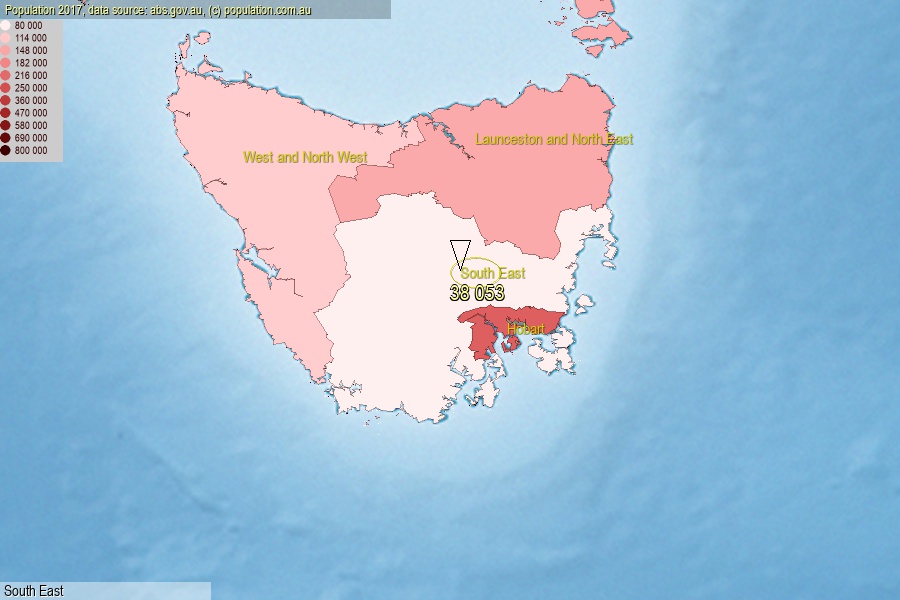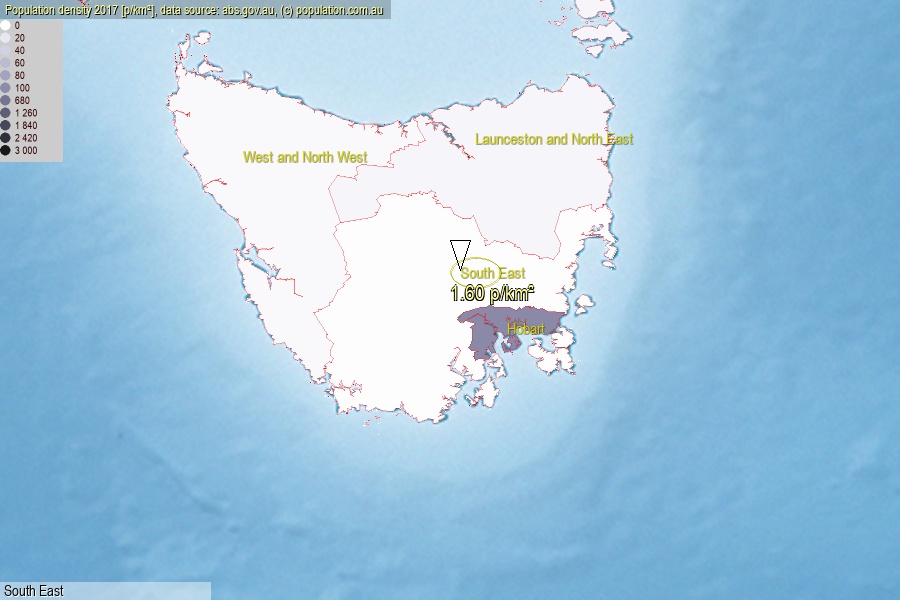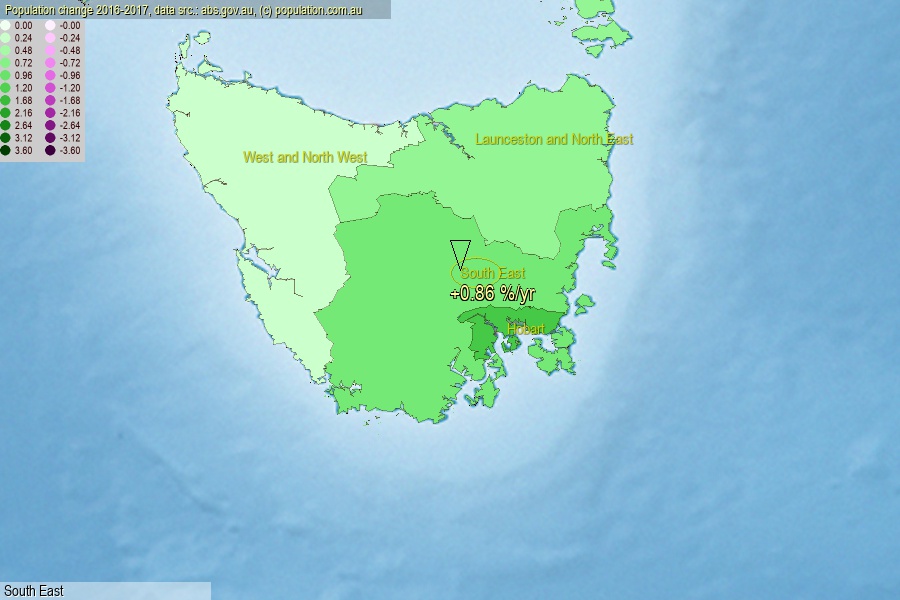 population.com.au
population.com.auLast official estimated population of South East (as Statistical Area Level 4) was 38 053 people (on 2017-06-30)[2]. This was 0.15% of total Australian population and 7.225% of TAS population. Area of South East is 23 822.00 km², in this year population density was 1.60 p/km² . If population growth rate would be same as in period 2016-2017 (+0.86%/yr), South East population in 2025 would be 40 747. [0]



Click to enlarge. South East is located in the center of the images.
Population [people], population density [p./km²] and population change [%/year] [2]
View borders » (new window) [4]
[1991-1992] +0.44 %/Y
[1992-1993] +1.08 %/Y
[1993-1994] +1.11 %/Y
[1994-1995] +0.24 %/Y
[1995-1996] +0.42 %/Y
[1996-1997] +0.36 %/Y
[1997-1998] -0.17 %/Y
[1998-1999] +0.35 %/Y
[1999-2000] +0.17 %/Y
[2000-2001] +0.30 %/Y
[2001-2002] +0.17 %/Y
[2002-2003] +0.68 %/Y
[2003-2004] +1.08 %/Y
[2004-2005] +1.07 %/Y
[2005-2006] +0.69 %/Y
[2006-2007] +1.28 %/Y
[2007-2008] +1.45 %/Y
[2008-2009] +1.61 %/Y
[2009-2010] +1.25 %/Y
[2010-2011] +0.87 %/Y
[2011-2012] +0.02 %/Y
[2012-2013] -0.23 %/Y
[2013-2014] +0.24 %/Y
[2014-2015] +0.10 %/Y
[2015-2016] +0.49 %/Y
[2016-2017] +0.86 %/Y
[0] Calculated with linear interpolation from officially estimated population
[1] Read more about SA4 and Australian Statistical Geography Standard (ASGS) on abs.gov.au
[2] Population data from Australian Bureau of Statistics (Population and density: 2017; change: 2016-2017)
[3] Digital Boundaries: Australian Statistical Geography Standard (ASGS) 2016.
[4] Border coordinates are simplifyed using Ramer-Douglas-Peucker algorithm.